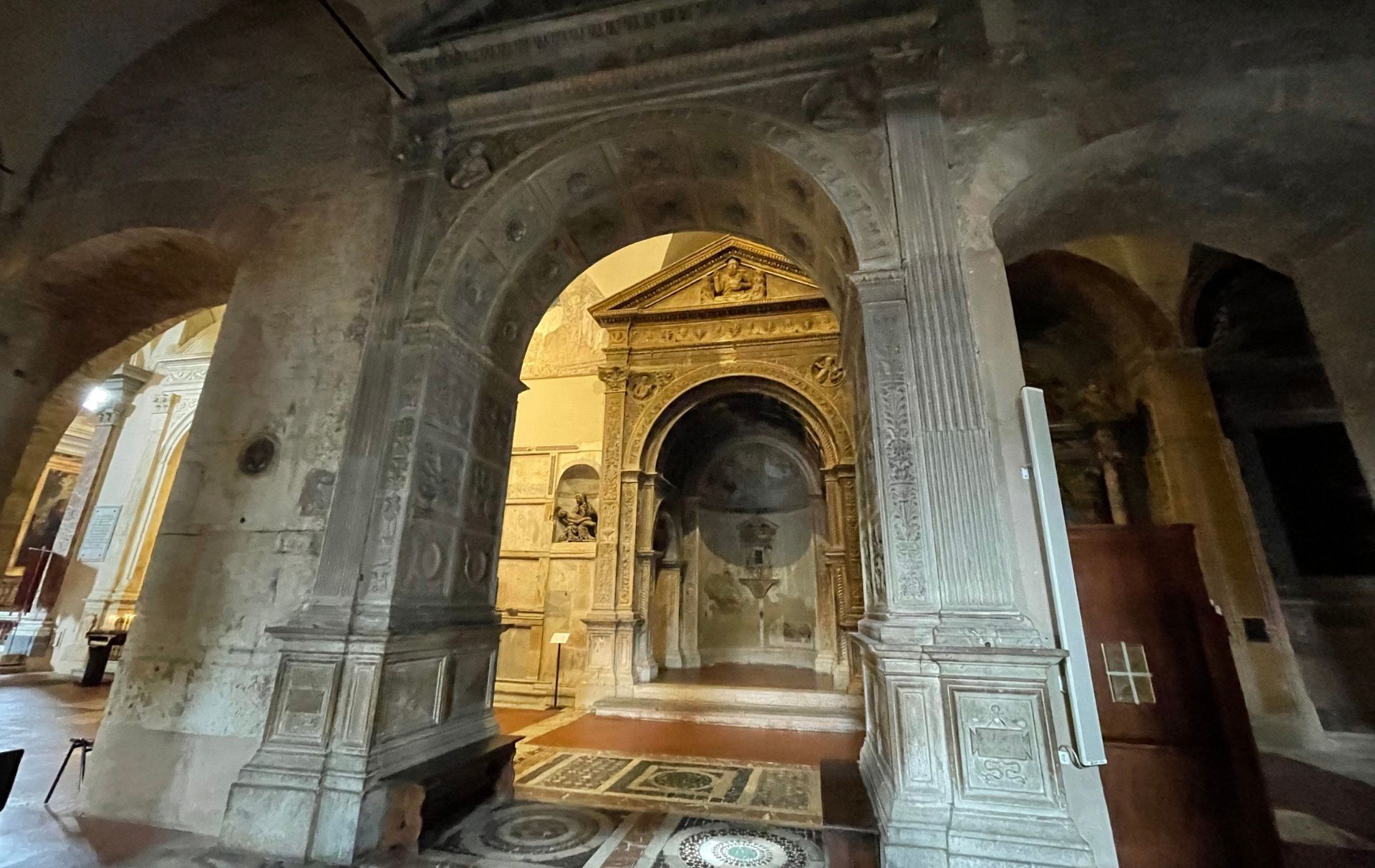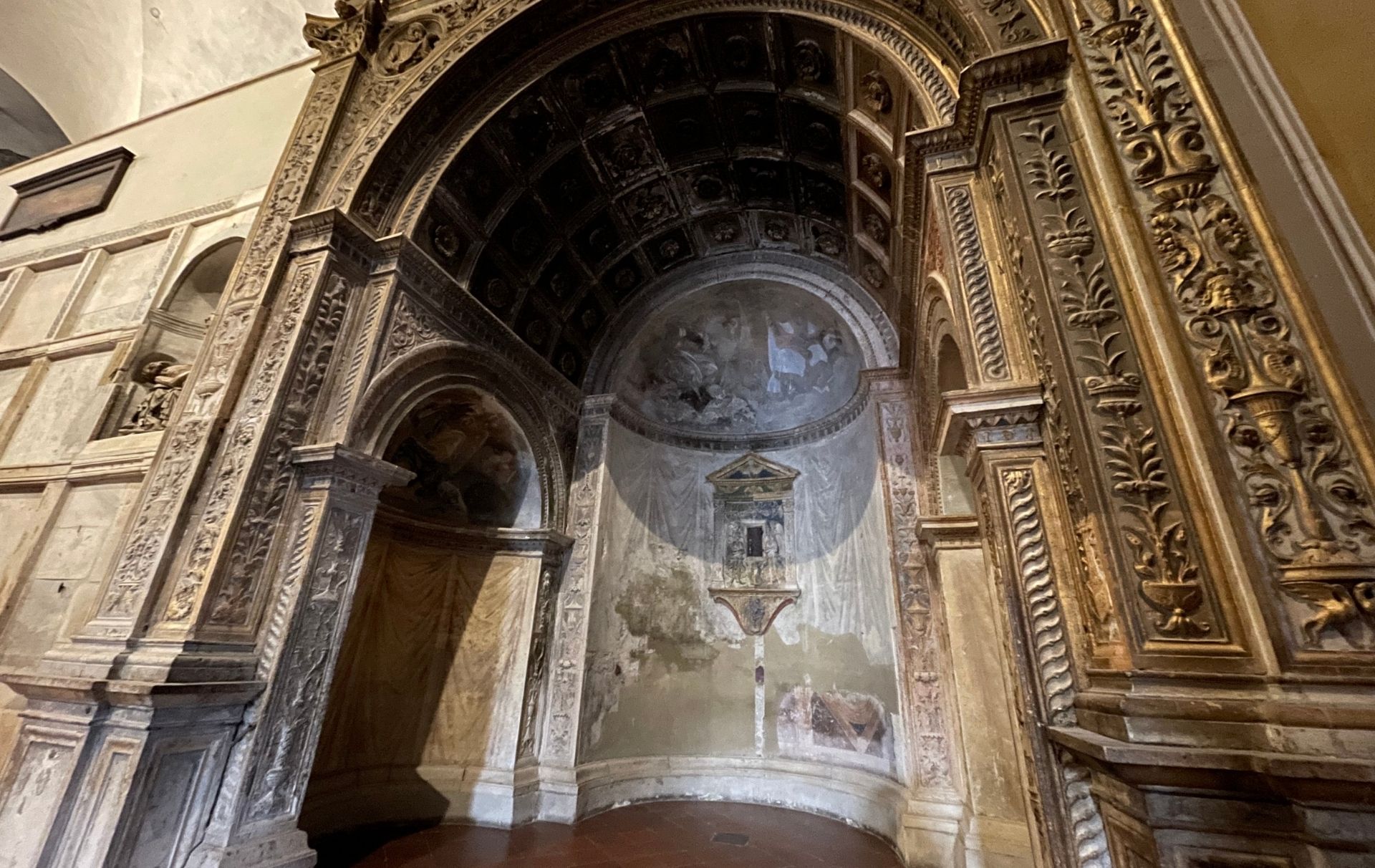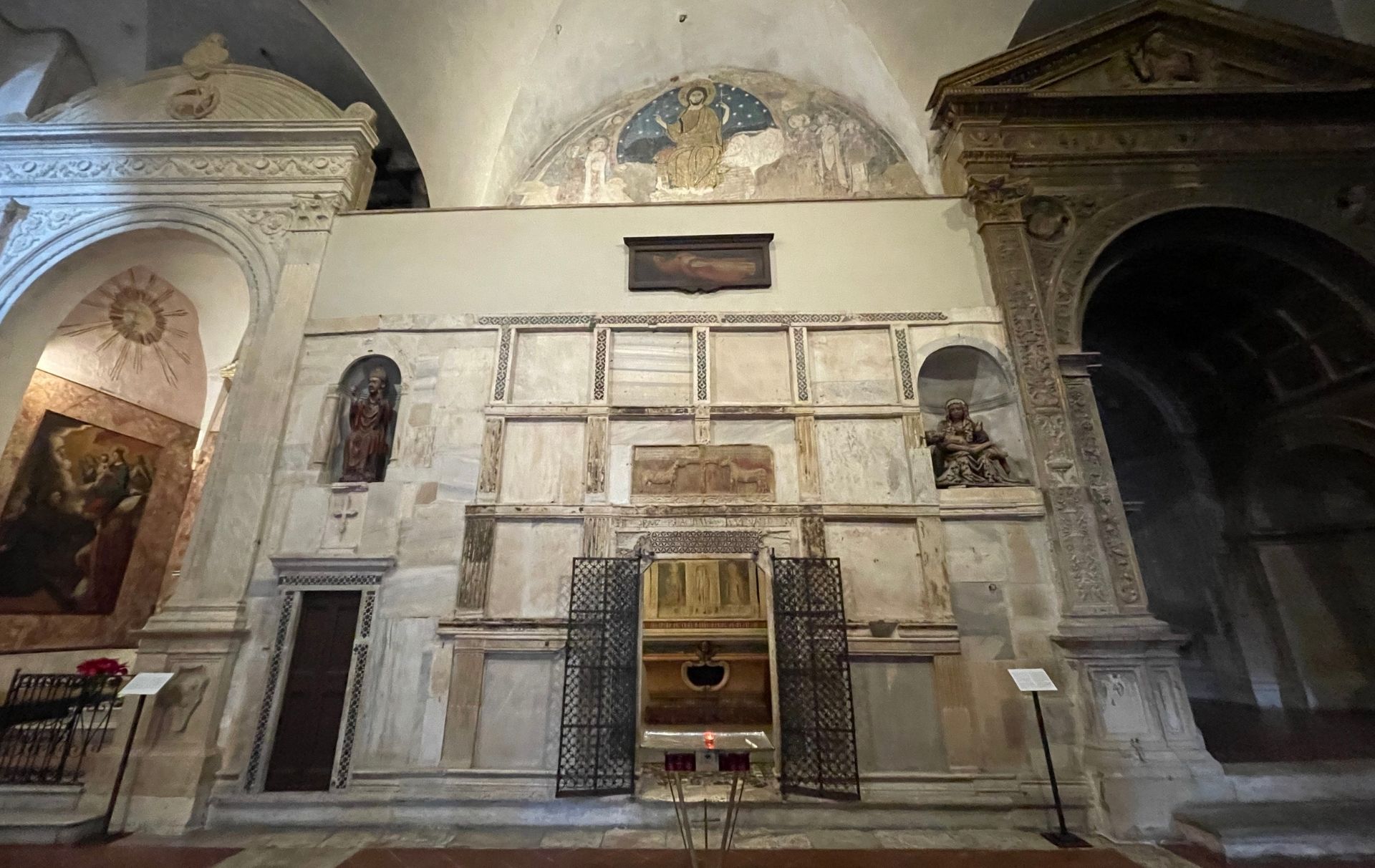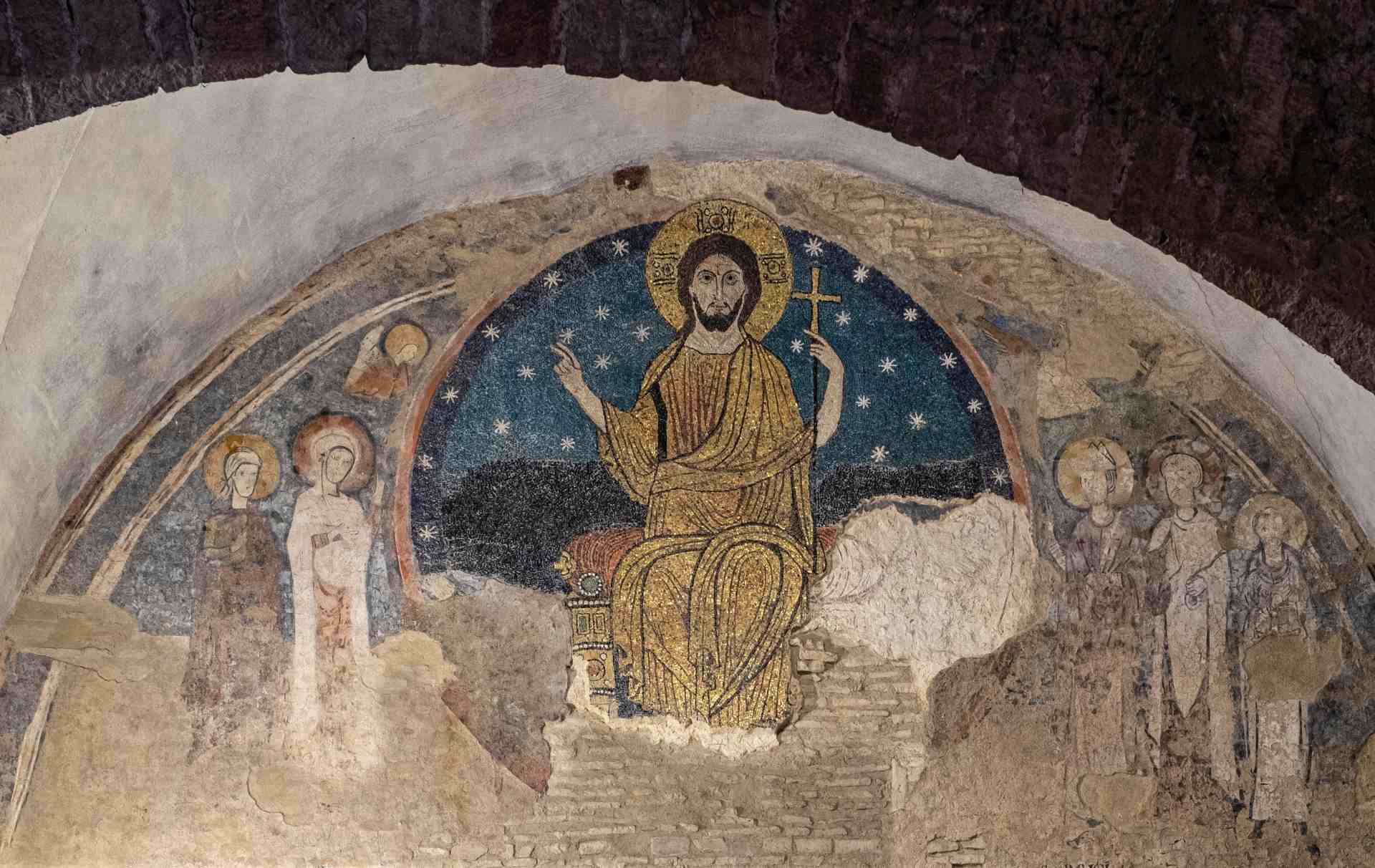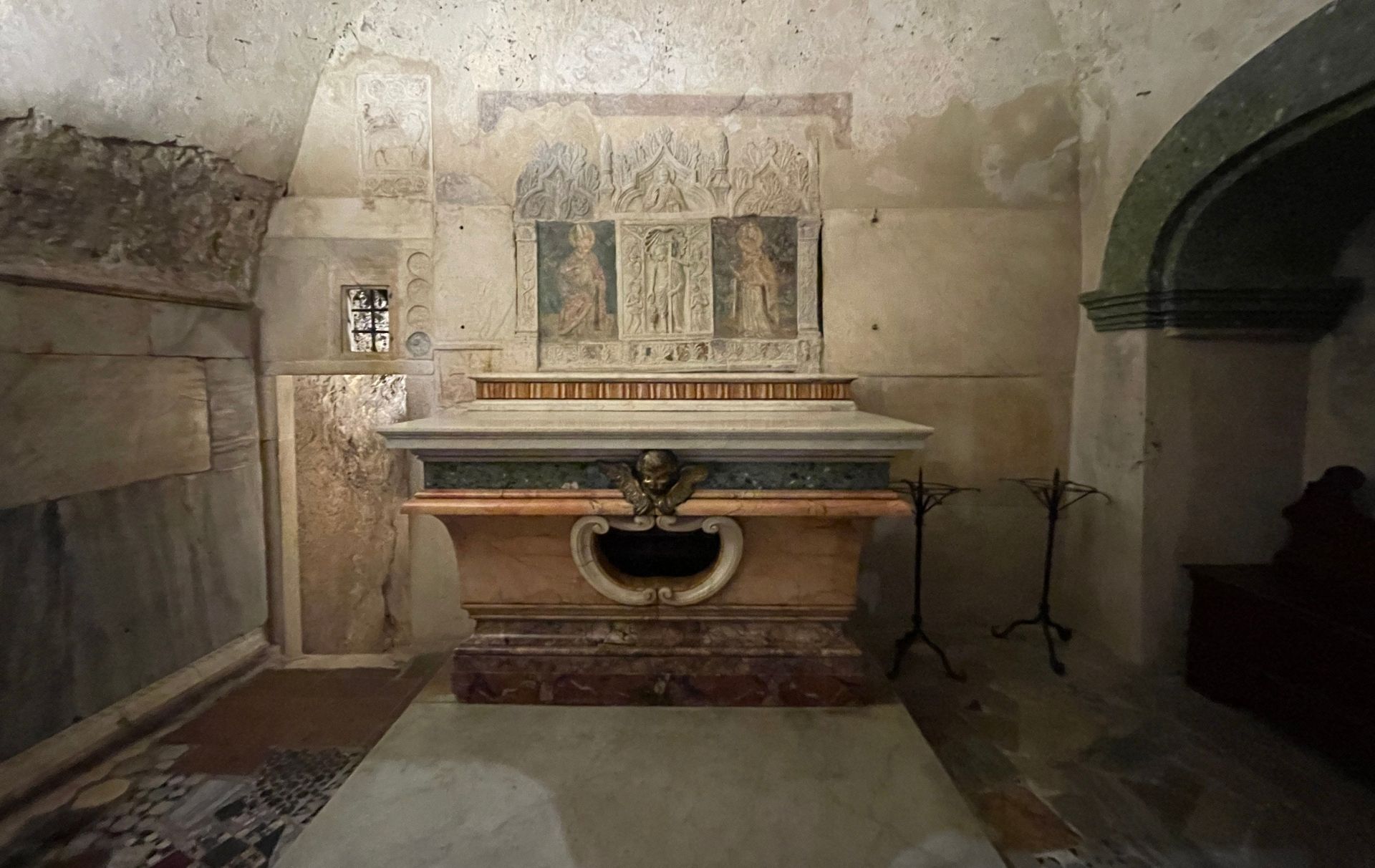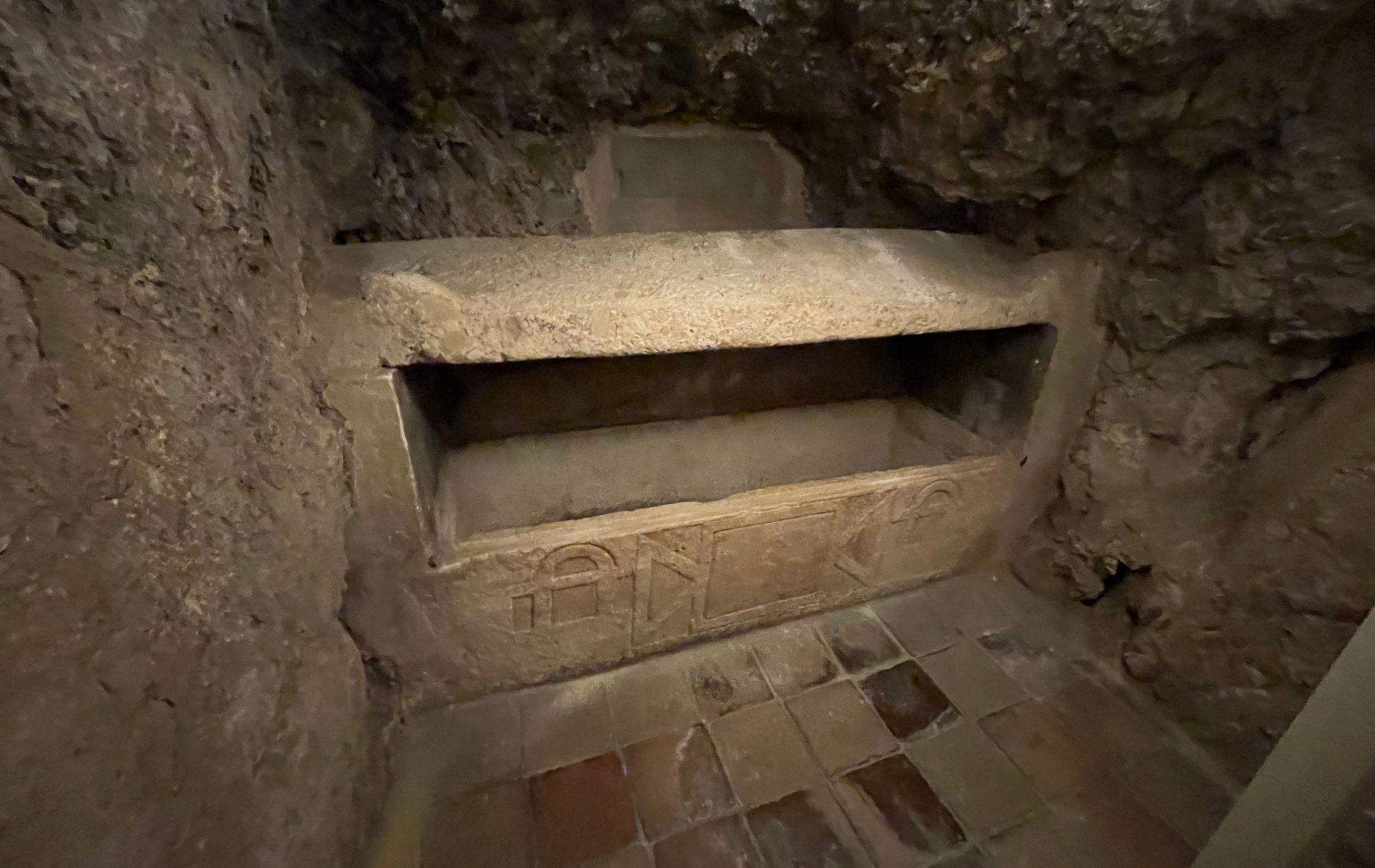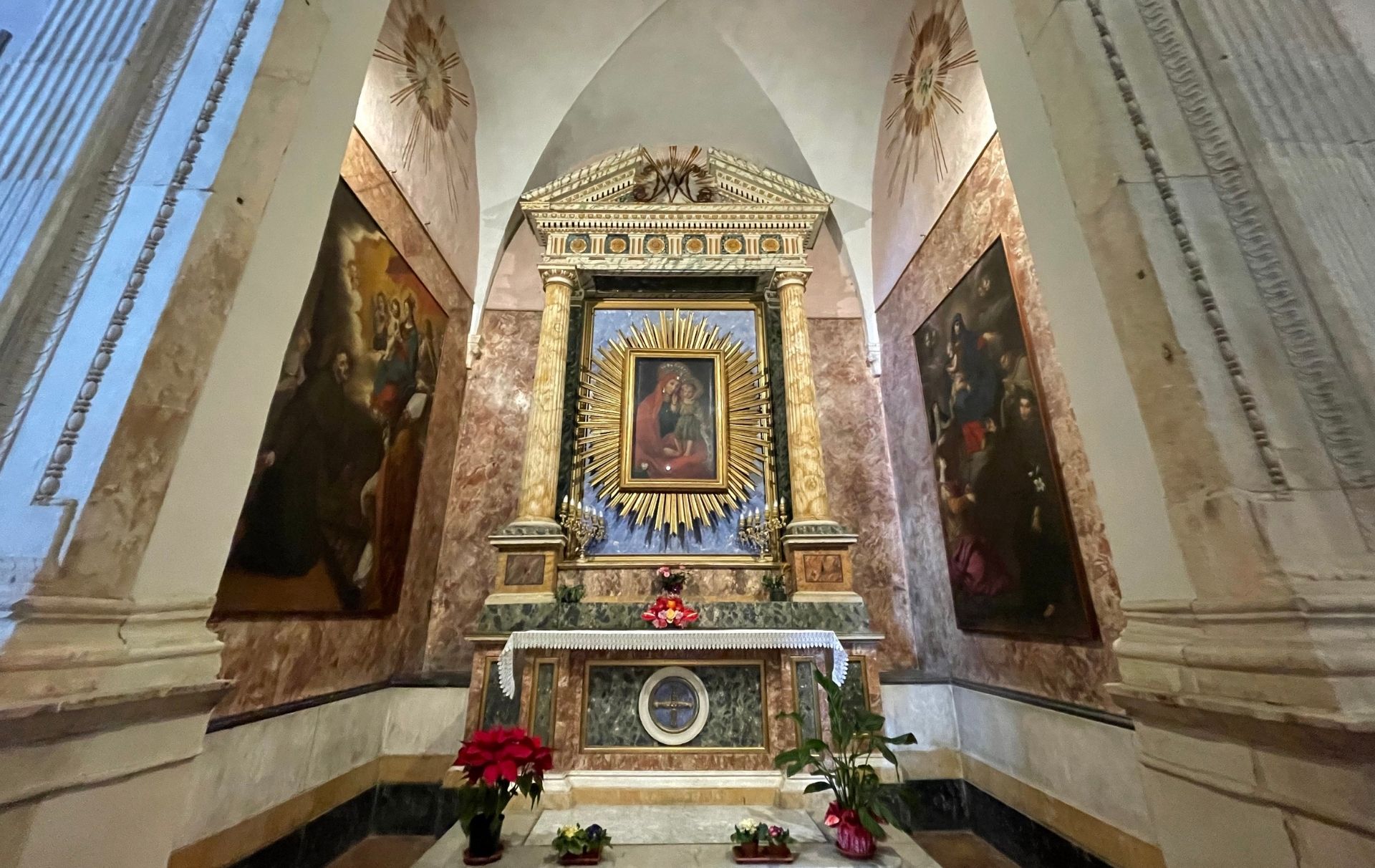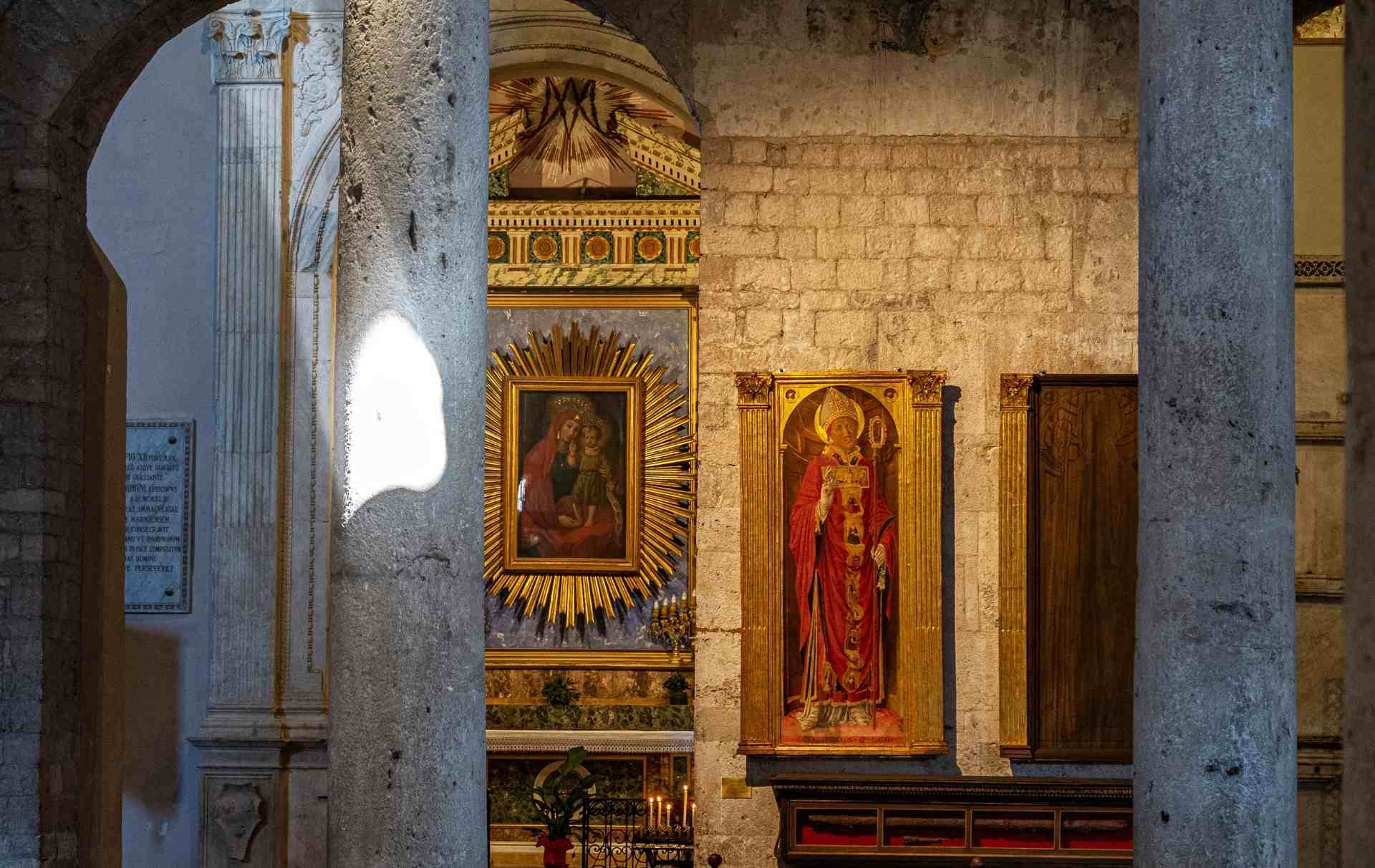One of the particularities of the Cathedral of Narni is the presence of two aisles instead of one.
The right aisle continues with that birthed to be inglobated in the principal building, the most sacred place of the town of Narni: the Sacello of Giovenale and Cassio (=Chapel of Giovenale and Cassio).
The right aisle, the fourth aisle and the Sacello of San Giovenale.
Visiting the two right aisles you can’t not admire, first of all, the Baptisimal Font, artwork made by Maestri Lombardi of 1506 built by the bishop Gormaz, placed inside of the Chapel of the University of builders built on the right side of the porch.
In the opposite side, inside a niche , a Madonna con Bambino of the Maestro of Narni of 1409, then the first altar, which in the past was of the Conti Mancinelli with a family sepulcrum, today demolished, has a painting of the XVII century of roman school represented San Carlo Borromeo.
Next to the altar , the Altar of San Rocco built in the XVII by tampering with the previous sepulcrum of the Bishop Carlo Boroomeno, of which remains some decorations and a mutilated statue, with the statue of the Saint in the past preserved in the Builders Chapel.
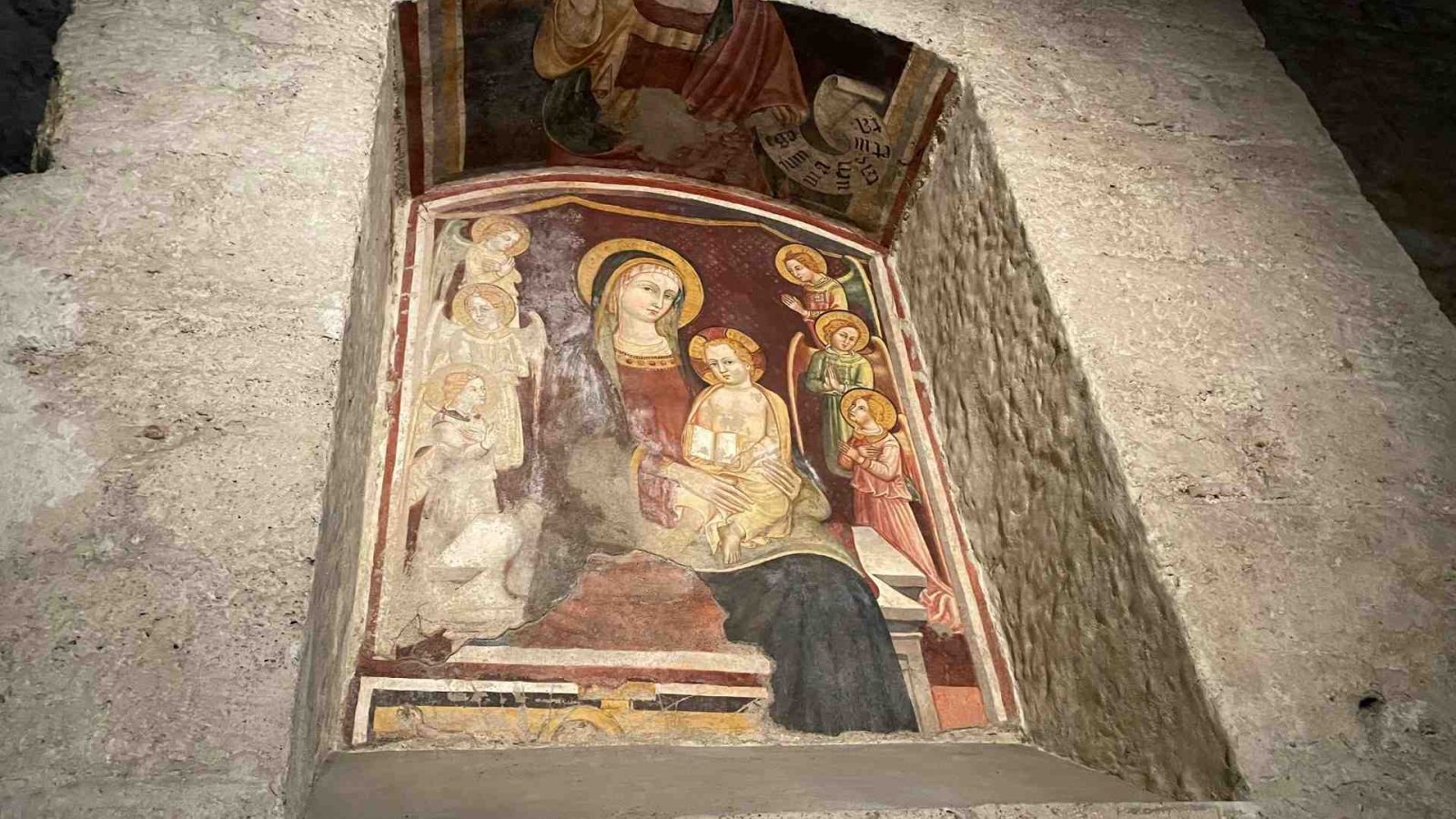
The ancient Chapel of SS. Sacramento.
Then there is the Ancient Chapel of SS.Sacramento with its sculpted triumphal arch, important and massive testimony of renaissance art.
Interesting are the two sculpted pillars, with capitals that in turn support a frame of bas-reliefs and festoons. The tympanum above bears in the center the symbol of the Eucharist, supported by two angels and, below, two medallions with images of Moses and David.
In front of the Chapel is elevated a second triumphal arch in historiated stone, solemn for its momentum and its importance.
In the inside facades of the pillars you can see twelve bas-reliefs, representing eucharistic symbols and friezes of end workmanship. The vault of the arch, like the vault of the Chapel, is decorated with stone panels with a rose carved in the center.
The outside of the arch of the Chapel repeats the same pattern of the triumphal arch: pillars, decorated by floral pattern, the tympanum with the image of the Dion Padre, medallions up with images of Elia and of Giona.
The inside of the Chapel is characterized by two little apses decorated with drapey with the vault decorated by frescos from the seventeenth century. In the little central apse there is the tabernacle , also this in stone sculpted following the classic draw of that period.
From the essays made for an attempt at restoration we can observe how the sculpture was decorated with gold on a painted background with a magnificent reflection of turquoise that brings us back to the terracotta of Della Robbia. A remarkable stretch of Alexandrian floor completes the nobility of the Chapel which, on the architectural side, can be considered the most beautiful Renaissance monument in Lombardy in Umbria.
The Sacello of Giovenale and Cassio.
Then you arrive at the Sacello of San Giovenale and Cassio which is, without doubt, the most important monument which preceded and survived to the roman century even if, for its importance, suffered some changes which had modified both the facade and part of the inside.
Its hypothesized that the history of the Cathedral of Narni starts in occasione of the death of the first bishop Giovenale in May 3, 376 AC, from his sepolture next to the roman walls where, then, was built, according a recent thesis , at that time of the bishop Cassio in the VI century, this structure in honor of his memory and where the following bishops of the town wanted to be sepolt.
It is possible to suppose that the sanctuary grew to such an extent that it assumed the appearance of a small basilica.
The outside and the facade.
The actual structure of the Sacello comes from works made, most of all, during the XV century, when the fourth aisle was settled with the purpose of accommodating some funeral chapels: the Eroli Chapel; the Chapel of the bishop Boccardo; and the Chapel of the SS. Sacramento by the Maestri Lombardi in 1499.
Was in the occasion that a new facade was realized, today not easy to interpret , with materials from the Roman Cathedral.
The mosaic with the Christ in throne surrounded by frescos with San Giovenale, San Pietro, San Benedetto and two Saints and datable , according to recent studies, of the XII century, dominate from above the actual facade. Next to, there is the column covered in part by two layers of frescos, of which the visible is for sure from the XV century of the school of Maestro of Narni, 1409. Particularly interesting are also the frescoes of the life of San Giovenale.
Central, above the door, there is the epigraph dedicated to San Cassio Fausta, with two lambs tending to the cross, datatable June 30, 558.
Two statues from the XV century are placed on the front: on the right there is the statue of mercy; on the left one the statue of San Giovenale.
More above, a painting from the XVI century which represents San Cassio.
The inside.
Inside of the sacello you can notice the grotticella (=cave) with the sandstone sarcophagus, built not earlier the VIII century, when was composed the body of the Saint when was brought back to Narni after the stealing by Adalberto I of Toscana, who in 878 brought the remains to Lucca in the Church of San Frediano.
This grotticella was occulted at the end of the IX century and was discovered again only in April 16, 1642, when the bishop Giampaolo Bocciarelli found again the sacred remains.
Inside, we can recognize traces of the columns it was decorated with, transforming it almost into a small basilica, when it was annexed to the Duomo and the inscriptions related to other bishops.
Clear are the traces of works and contributions form different periods: suffice the altar of the second half of the XVII century with the superimposed frontal, dating to the half of the fifteenth century.
Interesting is the floor made with the use of different fragments of an old cosmatesca flooring.
After the recognition in 1642 of the relics of San Giovenale and their translation under the major altar, the Chapter and the Citizenship declared the construction of the new Altar of the Confession, which was completed only in the early 1700s.
The Eroli Chapel, today dedicated to Madonna del Ponte.
Continuing, you will find the Chapel dedicated to the Madonna del Ponte, formerly the Chapel of the Crucifix and even earlier the Eroli Chapel.
In front of this Chapel you can observe a tempera table of Lorenzo di Pietro from Siena called the Vecchietta of 1470: the Pala di San Giovenale.
Below is kept a rod that was part of the “portanale” or “canopy” through which were brought back to Narni the relics of the Saint, stolen in the ninth century.
The new Chapel of SS. Sacramento.
The New Chapel of SS.Sacramento, placed after the beautiful Chapel of the Blessed Lucia, ws built in 1700.
Worth a particular attention the fresco – on the left – represents the Mercy between the Saints Francesco and Sebastiano of the XV century assigned to Pierantonio Mazzastris from Foligno who was really active in the second half of 1400 in Narni and in other cities of Umbria, leaving many works in the Church of San Girolamo,as in the San Domenico.
On the right side, is placed an altarpiece of the XVIII century by an unknown author , representing San Filippo Neri.
The visit to the Cathedral.
Continues the visit to the Cathedral:
Go back to the Cathedral’s page.
Cathedral of San Giovenale
Piazza Cavour – 05035 Narni TR
Opening hours:
- from 8am to 12.30pm
- from 3.30pm to 7pm
It is suggested to park the car in the Suffraggio’s parking lot and go up with the elevator until Via Garibaldi reaching Piazza Cavour.
Discover Narni.
Continue to walk with us discovering what to see inside the walls of Narni.
Or discover the points of interest of Narni and of its territory:
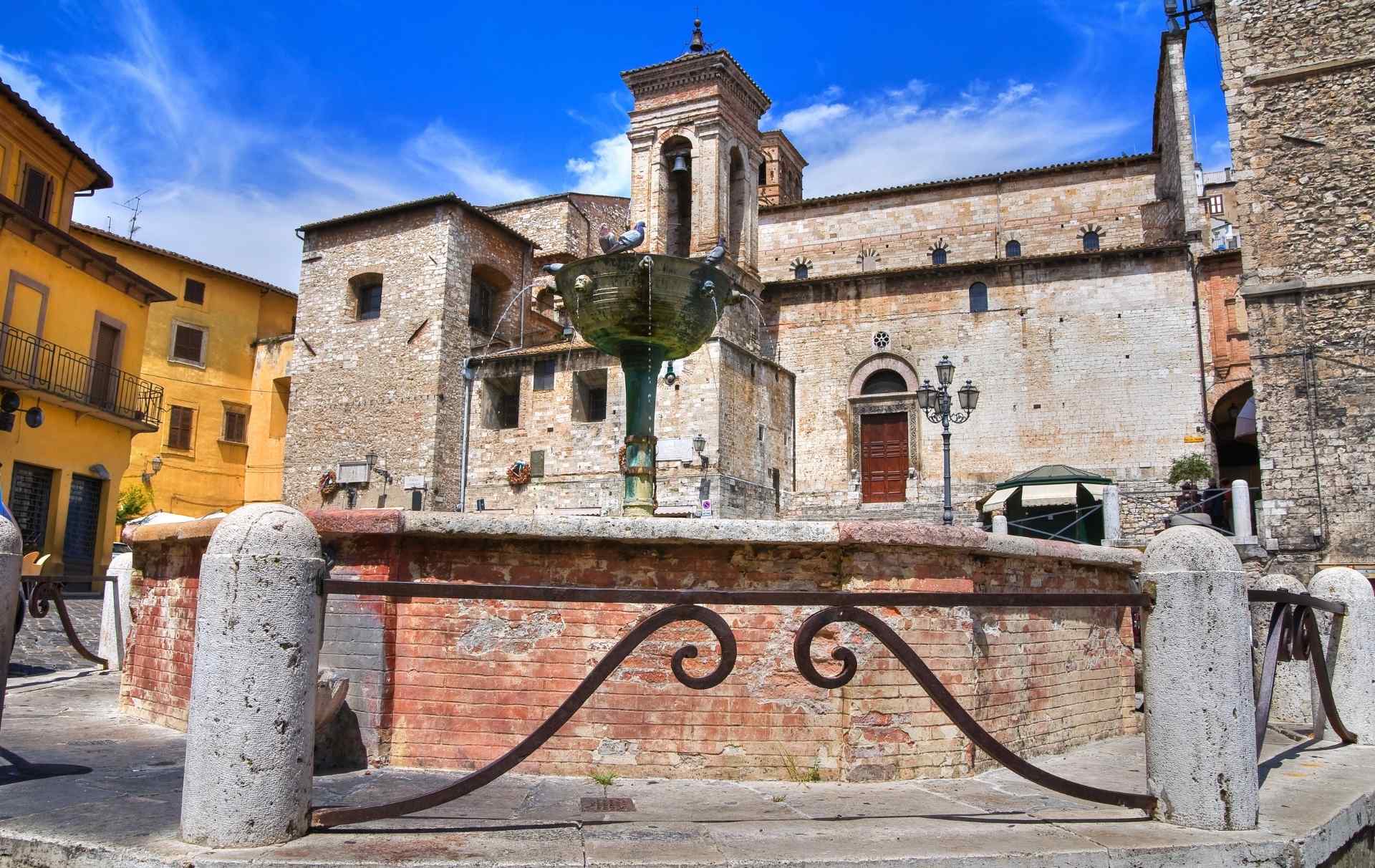
Piazza Garibaldi
Piazza Garibaldi (Garibaldi Square) was once called Lake Square or Lacus square because of a large cistern used during the Middle Ages to provide water
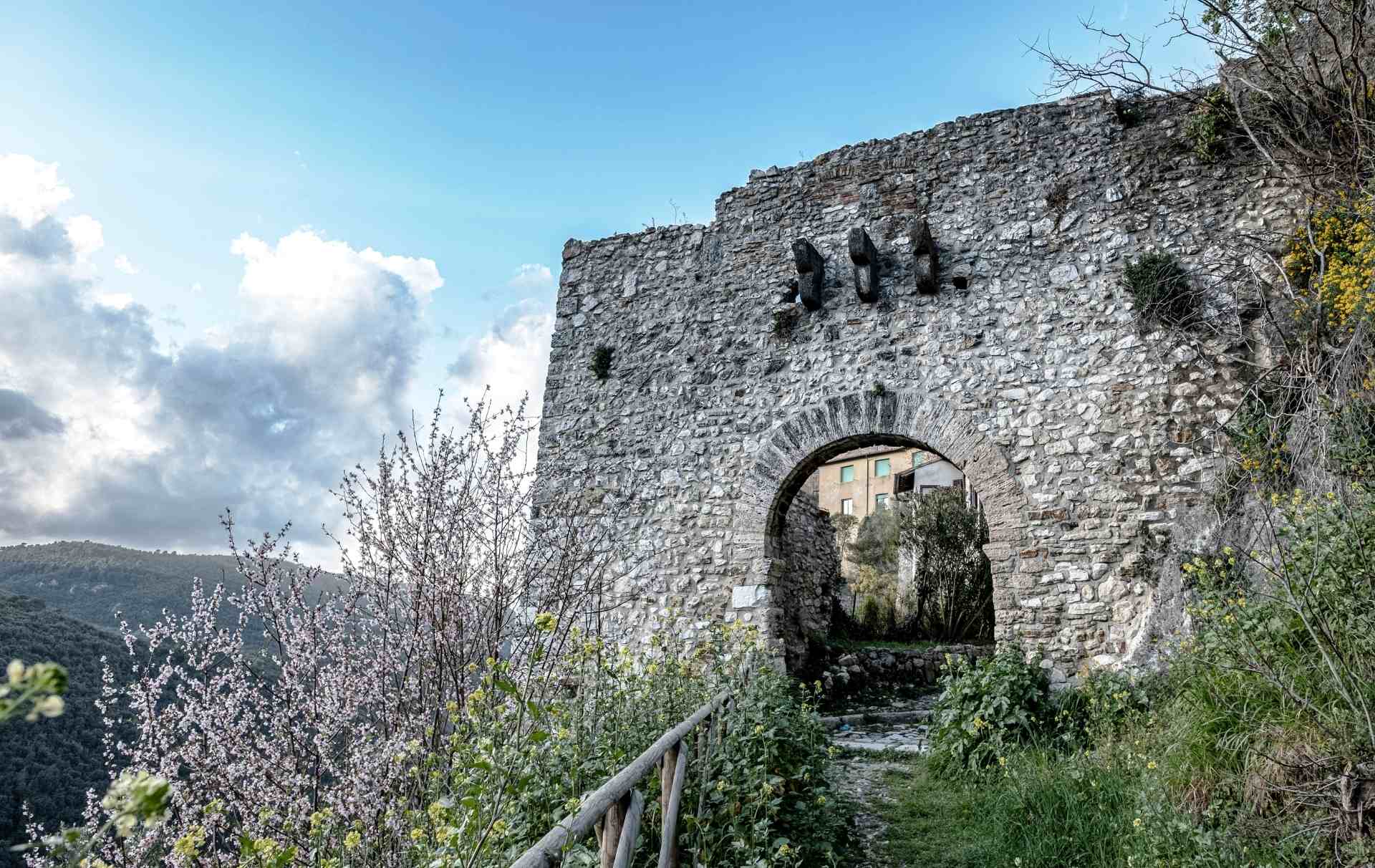
Pietra Gate
Faced on the slope which looks towards the valley, Pietra Gate (called even Porta delle Prede) is a suggestive medieval structure which give the name
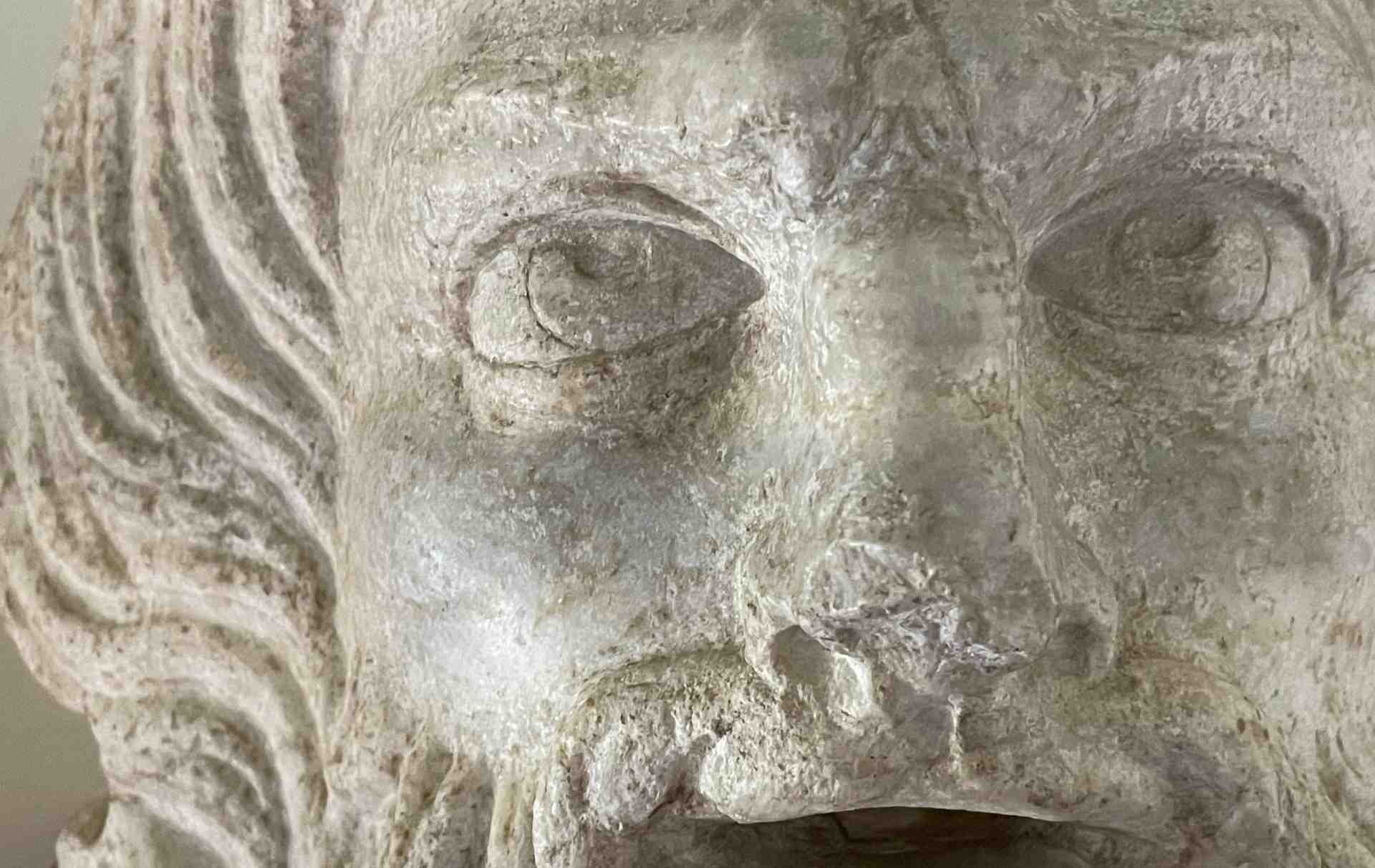
Museum: archeological section
The presence of a travertine statue of a lion, once guarding a tomb – late republican, first imperial – welcomes us in the hall of

